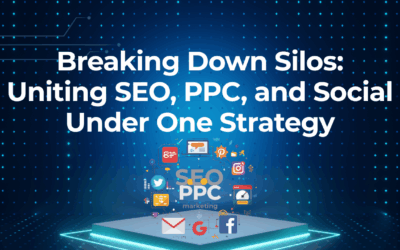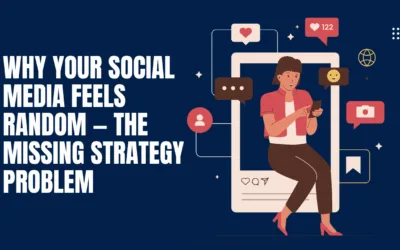Table of Contents
Introduction
In 2025, the rise of content commerce is changing how brands connect with consumers. Traditional online shopping no longer stands alone — it thrives when paired with storytelling, creativity, and data-driven strategy.
The most successful e-commerce brands today don’t just sell products — they sell experiences. Through a strong content marketing strategy, they’re building trust, loyalty, and conversions. Let’s explore how content marketing in e-commerce has become the ultimate growth driver and what your brand can do to make the most of it.
What Is Content Commerce?
Content commerce is the seamless blend of content and shopping — where storytelling meets sales. It’s the art of integrating your content marketing strategy directly into your buying journey.
Think of a blog that helps you choose the right skincare routine, a tutorial that demonstrates how a gadget works, or a video that shows a fashion influencer styling your latest collection — each one includes direct links to purchase. That’s content e-commerce in action.
Instead of shouting “Buy Now,” brands are inspiring customers through valuable, relatable, and SEO-driven content that leads them naturally to checkout.

Why Content Marketing in E-Commerce Matters More Than Ever
Today’s digital shoppers want authenticity. They research before they buy, compare before they commit, and trust content more than ads.
That’s why content marketing e-commerce has become the heart of every growth-focused brand strategy. It helps you:
- Rank higher on search engines through keyword-optimized content.
- Build brand credibility with valuable and expert insights.
- Increase conversions by educating and inspiring purchase decisions.
- Boost engagement through videos, blogs, and user-generated content.
In short, content commerce isn’t just about attracting clicks — it’s about converting readers into buyers and browsers into brand advocates.
Types of Content That Drive E-Commerce Conversions
✅Educational blog posts answering questions like “Which laptop is best for students in 2025?” can drive SEO traffic and build authority.
✅Videos help customers visualize your product in action — increasing purchase intent by up to 85%.
✅Shoppable posts and influencer collaborations are the backbone of modern content commerce.
✅Story-based emails keep customers informed and emotionally connected post-purchase.
✅Reviews, testimonials, and unboxing videos add authenticity that paid ads can’t match.
Content Commerce Performance Breakdown
How to Build a Winning Content Commerce Strategy
To make content marketing in e-commerce effective, you need structure, creativity, and data-driven execution.
1. Define Clear Goals
Decide whether your content aims to increase awareness, generate traffic, or drive conversions.
2. Create a Unified Content Marketing Strategy
Align blogs, social media, and product pages under one vision. Consistent tone and visuals build stronger brand recall.
3. Use the Right Content Marketing Platforms
Leverage content marketing platforms like HubSpot, WordPress, or Shopify CMS to integrate storytelling directly into your online store.
4. Optimize Content for SEO
Incorporate long-tail keywords, optimize meta tags, and ensure mobile-friendly layouts to attract organic traffic.
5. Personalize and Automate
Use customer data to deliver tailored content experiences — like personalized recommendations or email flows.
6. Measure and Refine
Track KPIs such as engagement rate, conversion rate, and ROI to identify what drives sales. every post becomes a potential search asset — boosting visibility and authority simultaneously.
Real-World Examples of Content Commerce in Action
- IKEA: Turns lifestyle blogs into shoppable inspiration pages.
- Sephora: Blends how-to guides and video tutorials directly linked to product pages.
- Nike: Uses athlete stories and product features in immersive storytelling formats.
- Glossier: Empowers customers with UGC-driven marketing and real-life testimonials.
Each of these brands uses content marketing platforms to integrate storytelling and sales — creating a seamless buyer experience.
Final Thoughts
The future of e-commerce isn’t just about transactions — it’s about connections.
By embracing content commerce, brands create powerful stories that convert browsers into loyal customers.
With a well-planned content marketing strategy and the right content marketing platforms, your brand can stand out in a crowded digital marketplace, attract qualified leads, and drive long-term sales.
Don’t just sell products — sell experiences through content that inspires, educates, and converts.
Boost your digital growth with expert SEO and social media marketing strategies — contact us today!
Claim your free digital marketing audit.
Stay updated with SunBPO Solutions for the latest trends, insights, and strategies to keep your business ahead of the curve!
Frequently Asked Questions (FAQs)
How does a content marketing strategy help e-commerce brands?
It builds trust, increases organic visibility, and encourages repeat purchases through authentic engagement.
How can small e-commerce businesses use content commerce effectively?
Start small — post blogs, create product videos, and use social media storytelling to build credibility.
Is content commerce the future of online selling?
Absolutely! As ads become less effective, content e-commerce is the future of organic growth and brand trust.





0 Comments